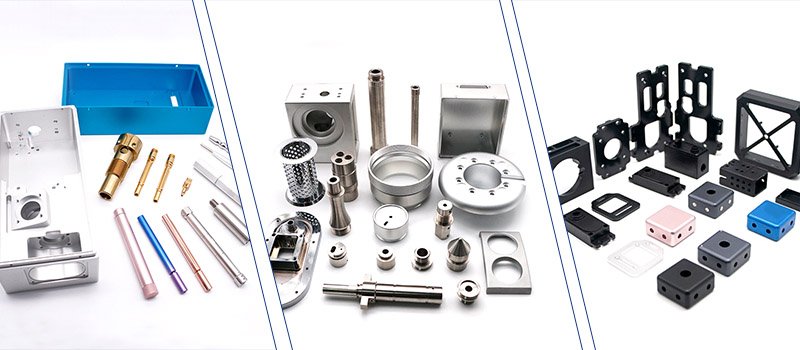In the world of CNC machining, producing high-quality, cost-effective components is not just about precision or advanced equipment; it begins long before the machining process itself. One of the most critical steps in the process is Design for Manufacturability (DFM) feasibility analysis.
As a seasoned industry expert at YL-Machining, I’ve seen how a thoughtful approach to DFM can prevent costly errors, ensure efficient production, and meet tight deadlines. If you’ve ever wondered what DFM feasibility analysis entails and how it impacts CNC machining, let me break it down for you.
What Is DFM Feasibility Analysis?
DFM (Design for Manufacturability) feasibility analysis is a process that evaluates a part’s design to determine whether it can be efficiently and cost-effectively manufactured using CNC machining.
It’s a collaborative effort that bridges the gap between design engineers and machinists. The goal is to optimize a part’s design for production while maintaining its functionality and performance.
Think of it as a reality check: Can this design be manufactured as intended, or are there features that will increase cost, lead times, or the risk of errors?
Why Is DFM Important in CNC Machining?
CNC machining is incredibly versatile, capable of producing parts with complex geometries and tight tolerances. However, not all designs are created equal when it comes to manufacturability.
1. Cost Efficiency
Poorly designed parts can drive up costs unnecessarily. Features like extremely tight tolerances, deep cavities, or thin walls require additional machining time, specialized tools, or multiple setups.
2. Production Speed
Efficient production relies on a design that aligns with the capabilities of CNC machines. A well-optimized design minimizes the number of setups and tool changes, reducing lead times.
3. Quality and Consistency
Some designs may be prone to defects during machining due to inherent challenges, such as tool deflection or thermal stress. DFM ensures the design is robust enough to yield high-quality results consistently.
4. Material Selection
Certain materials are harder to machine than others. DFM evaluates whether the chosen material is compatible with CNC machining and whether alternative options might offer better results.
Key Components of DFM Feasibility Analysis
DFM feasibility analysis involves several key considerations, each aimed at identifying potential challenges and optimizing the design.
1. Geometric Complexity
- Challenge: Highly complex geometries may require specialized tools or multi-axis machining, increasing cost and lead time.
- Solution: Simplify features where possible without compromising functionality. For instance, avoid unnecessary undercuts or intricate internal cavities.
2. Tolerances
- Challenge: Tight tolerances demand more precision, increasing machining time and costs. Over-specifying tolerances can add unnecessary expense.
- Solution: Define tolerances only where critical and consider loosening tolerances for non-critical features.
3. Wall Thickness
- Challenge: Thin walls can deform under cutting forces or vibrate during machining, leading to inaccuracies.
- Solution: Ensure wall thickness meets the minimum requirements for material stability during machining.
4. Hole Depth and Diameter
- Challenge: Deep holes or small-diameter holes are challenging to machine and may require special tools.
- Solution: Limit the depth-to-diameter ratio of holes to a manageable range (typically less than 10:1).
5. Material Selection
- Challenge: Hard-to-machine materials, such as titanium or certain stainless steels, increase tool wear and machining time.
- Solution: Opt for materials with good machinability where possible, or design features to reduce the challenges associated with difficult materials.
6. Surface Finishes
- Challenge: High-quality finishes often require secondary operations, adding cost and time.
- Solution: Specify surface finishes only where necessary and explore whether standard CNC machining finishes are sufficient.
How Is DFM Analysis Conducted?
DFM feasibility analysis is a systematic process that typically involves the following steps:
1. Design Review
The design team and CNC experts review the part’s 3D model and technical drawings to identify potential manufacturing challenges.
2. Simulation and Prototyping
Advanced CAD/CAM software can simulate the machining process, highlighting issues such as tool collisions or excessive material removal. Rapid prototyping may also be used to validate the design.
3. Feedback and Iteration
Based on the findings, the design is revised to address manufacturability concerns. This iterative process continues until the design is optimized.
Common Issues Identified in DFM Analysis
From my experience, here are some of the most frequent issues that arise during DFM feasibility analysis:
- Unnecessarily tight tolerances: Often specified without considering whether they are functionally required.
- Hard-to-reach features: Such as internal corners with small radii that exceed the capabilities of standard tools.
- Complex setups: Designs requiring multiple setups can significantly increase machining time.
- Material wastage: Inefficient designs that result in excessive material removal.
The Benefits of DFM Feasibility Analysis
Investing time in DFM analysis pays off in numerous ways:
- Reduced Costs: By optimizing the design for manufacturability, you avoid unnecessary expenses.
- Faster Production: Simplified designs lead to quicker machining and shorter lead times.
- Higher Quality: Eliminating potential defects at the design stage ensures consistent, high-quality results.
How YL-Machining Incorporates DFM into CNC Projects
At YL-Machining, DFM is an integral part of our workflow. We work closely with clients to evaluate their designs and provide actionable feedback, ensuring their projects succeed from the start.
Whether you’re new to CNC machining or have years of experience, our team is here to help refine your designs for optimal manufacturability.
Conclusion: The Power of Proactive Design
DFM feasibility analysis is not just a step in the process; it’s the foundation of successful CNC machining. By addressing potential issues early, you save time, money, and headaches down the line.
Have a project in mind? Let YL-Machining help you navigate the complexities of DFM analysis and bring your designs to life with precision and efficiency. Together, we’ll turn challenges into opportunities and ideas into reality.
Reach out today—let’s create something exceptional.






